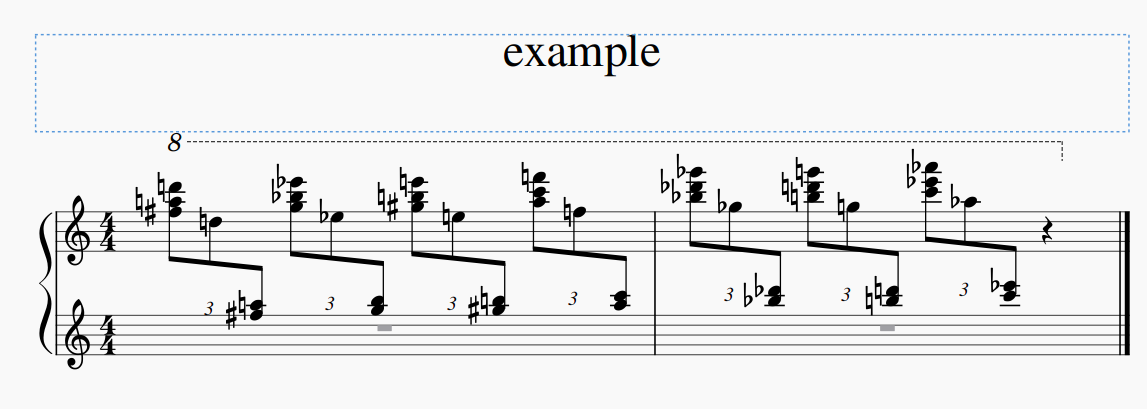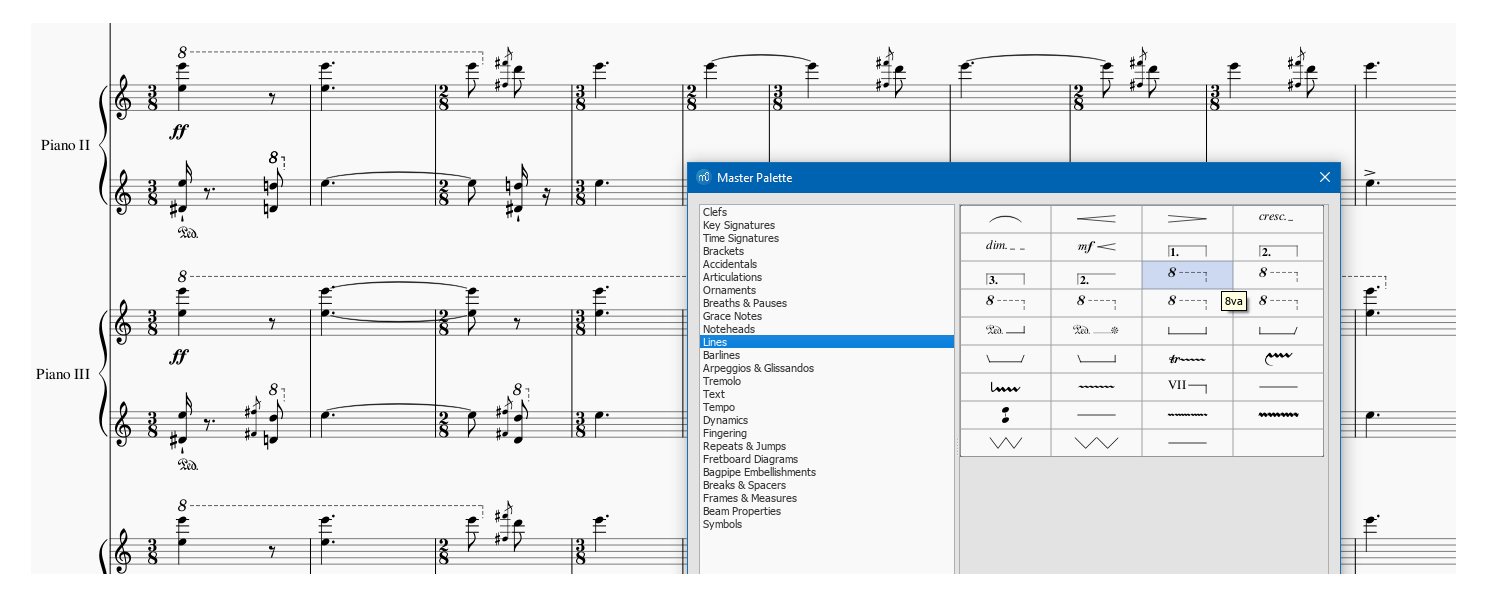

Musescore 8va series#
In this series of examples we represent a broad selection of samples involving features that are surpass those described in beginners' lessons.Įarly Vocal Music Example 1.
Musescore 8va software#
Vocal music often requires the use of more features of notation software than instrumental music does. Given the unusual circumstances we face in the 2020-2021 academic year, Christina Kim has assembled these examples to show the program's possibilities in music theory, practice, and undergraduate studies generally. These examples supplement the initial exercises designed the MuseScore unit in Music 253/CS 275A at Stanford University, where our interest is in musical data translation. I've seen some forum discussion which implies that there is a facility in Musescore to insert an 8va sign above a note or notes and have it play back at the octave (different from merely using the up arrow to raise the note.) But I've searched both the forum and handbook and can't find. Using MuseScore in practical academic studies "The Peacock" from 3 Hungarian Folksongs, Csík (Béla Bartók) 8, Op.13 (“Pathétique”), second movement (Ludwig van Beethoven) 3.2 Classical/Romantic-era instrumental music.Minuet in G (Christian Petzold), last phrase Minuet in G (Christian Petzold), first phrase Chord symbols added for "Dido’s Lament" (Henry Purcell) last measure span the entire page: Style -> Edit general Style -> Page -> Last system fill threshold: 0. Make sure that after each bar a line break is included. Roman-numeral analysis figures for "Dido’s Lament" (Henry Purcell) To create customized blank sheet music lines in musescore (version 1.x), do following: include a line break (left menu 'breaks & spacer) leftmost symbol after each bar. Figured bass in "Dido’s Lament" (Henry Purcell) 2.2 Baroque-era vocal music in MuseScore.Renaissance polyphony: "Jesu, Rex admirabilis" (Giovanni Pierluigi da Palestrina), closed-position score Renaissance polyphony: "Jesu, Rex admirabilis" (Giovanni Pierluigi da Palestrina), open-position score Secular monophony: "Sumer is Icumen in" (anonymous) Two-voice polyphony: Excerpt from the "Duo Agnus Dei II" of the Missa de Beata Virgine (Josquin des Prez) Two-voice organum: "Kyrie, Cunctipotens genitor"

1 Using MuseScore in practical academic studies.If only a text marking of "8va 2nd time" we're put above a section of piano music, it wouldn't be clear if this applies to both staves or just one. Piano, harp and other keyboard instruments, on the other hand, are examples of instruments using two staves in this case you need to use a dotted line to make it clear which stave has the octave adjusted. This is the case for most instruments in a score. If it is not clear when the player should return to playing at pitch, for instance if it is not simply after the repeated section, you use the term loco to show that the music is to played at the written pitch.Īlso, to answer your additional question, the markings above would be understood to only apply to one instrument, and so one stave, in a score, if the instrument only uses a single stave. Having said that, it is often useful to use a short amount of text to make your meaning clear. However, this use of small or bracketed notes, for a change on a repeat, is fairly common, so the text may not be necessary. You could also then use text to be absolutely clear, for instance by adding something like "2nd time" above the first bracketed note. If you only want a few notes in a part to be played an octave higher on a repeat, you could add these notes above the notes to be played the first time, and make the note size smaller or bracket the noteheads. You could use a dotted line to show the exact group of notes to be played an octave higher if necessary. Something like "8va 2nd time" at the beginning of the passage you want an octave higher, is perfectly clear. If a whole section of music in a particular part is to be played an octave higher when repeated, simply use text. There are a couple of ways to achieve this.


 0 kommentar(er)
0 kommentar(er)
